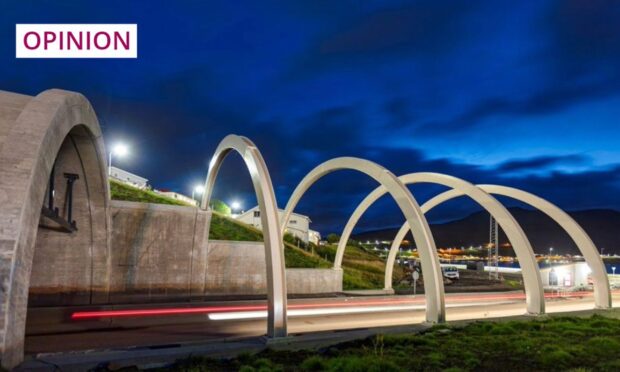Folk living and working in the Faroe Islands and western Norway know all about climate change these days, with increasing storms and rough seas.
And so, too, do Scots in the Hebrides, Orkney and Shetland.
But it is not only climate change that is affecting Scotland. The seemingly endless problems with CalMac services, port closures and steadily increasing tourist traffic are making travel more and more of a lottery in the Western and Northern Isles.
What to do about it? Could undersea road tunnels help? They, at least, are not at the mercy of wind and weather. Undersea tunnelling technology has advanced enormously in the past 20 years, and both Norway and the Faroes are using it to connect remote communities. Scotland has one undersea road route, the Clyde Tunnel, opened in 1963.
The Faroe Islands, with a population of 53,000 (only twice that of Elgin), has four undersea road tunnels, and is building another. Norway has built over 30 undersea road tunnels in the past 20 years. It has just started building the longest one in the world, the Boknafjord tunnel, just north of Stavanger. It will be 27km long, cost over £2 billion, and will take 10 years to complete.
Could Scotland do the same? Why not? There has been no shortage of discussion about the idea of using undersea road tunnels to replace, or at least reduce, dependence, on ferry services.
Scotland is certainly seriously considering subsea tunnels
Local councils in the Western Isles, Shetland and Orkney have devoted much energy to investigating the possibilities of inter-island undersea road tunnels, and links to mainland Scotland itself.
Angus MacNeil, MP for the Western Isles, has long lobbied for an undersea road tunnel from Harris to Skye. That would be about the same length as the Boknafjord tunnel now under construction in Norway.
Shetland Islands Council recently had a meeting with Secretary of State for Scotland Alister Jack about its Shetland Short Crossing Project. And a delegation from Unst and Yell in Shetland has just visited the Faroes to see how the undersea road tunnels work there. There has been similar interest in Orkney around tunnels connecting the islands, and with the mainland.
But the Scottish Government itself is also considering several undersea road tunnel projects.
Transport Scotland’s Strategic Transport Projects Review 2, completed in December last year, recommended more consideration be given to a subsea tunnel from Mull to the mainland, and to subsea tunnels for the Sound of Barra and the Sound of Harris in the Outer Hebrides. If and when these two latter tunnels are completed, the whole of the Outer Hebrides will be ferry-free.
A project to link Benbecula with Skye, across the Minch, was also considered, but was put on the shelf for the time being.
Cutting costs and bringing communities closer together
But who is going to pay for these tunnels? Well, in Norway, 40% of the cost will be paid from vehicle tolls. To use the 27km Boknafjord tunnel (about the same distance as from Harris to Skye), drivers will be charged £28 for a single trip. The CalMac ferry crossing from Harris to Skye will set you back £40 for a car and driver, and will take you over an hour and a half (weather permitting).
In the Faroes, a one-way trip in the tunnels will cost you between £12 and £30. A public limited company, EST, has been established by the government there to construct and operate the tunnels. EST has the power to take up loans on the international market and has already borrowed from US banks.
In Norway, they have been busy connecting islands to each other and to the mainland with undersea road tunnels for over 40 years. This has not happened at the expense of the country’s very extensive ferry service, which is still needed, as Norway’s coastline is very much longer than Scotland’s.
But, by linking up remote communities, cut off from one another by an increasingly turbulent climate, Norway and the Faroe Islands have brought new life to areas often forgotten by central authority.
In the Faroes, communities are being brought closer to Tórshavn, the capital city, and new houses and even schools are coming to islands with declining populations. In Norway, journey times and costs are being cut overnight.
Is it not time for Scottish politicians to wake up to the potential of modern undersea tunnelling technology, and increase the country’s connectivity once and for all?
Originally from Scotland and now living in Norway, Mike Fergus is a retired consulting economist and partner in a Norwegian consulting firm



Conversation